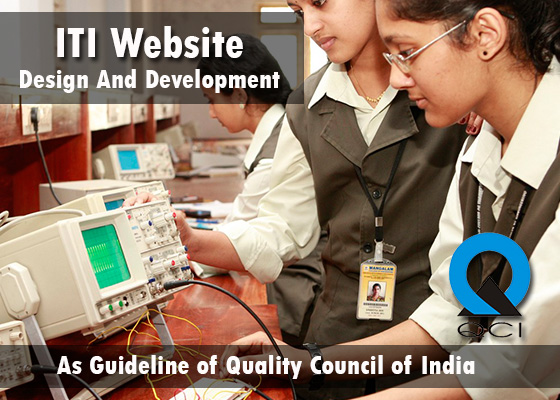Economic Viability of Indian Agriculture By Prof. Ramphul Ohlan
Economic Viability of Indian Agriculture
By Prof. Ramphul Ohlan | Institute of Management Studies and Research, Maharshi Dayanand University, Rohtak
Learners enrolled: 1
Economic viability of agriculture is its ability to cover the cost of production and to provide an additional rate of return over the capital invested. It depends on several economic factors like prices and quality of input and output, sales revenue, cost of cultivation, productivity, investment, farm size, and competitiveness. The government of India announces minimum support price (MSP) for some crops by ensuring a return of fifty per cent over the cost of cultivation. However, the cost of cultivation used to determine MSP is yet to consider the rental value of the land. Even, a large number of farmers are deprived of MSP announced by the government. The agitation of Indian farmers for an assurance of remunerative prices for their crops has become the world's largest agitation. According to media reports, over eight hundred farmers have lost their lives in this historical agitation. The extent and severity of farmers agitation give a reflection on their poor economic conditions. Recently, the Government of India (GOI) has taken several new policy initiatives to improve the economic viability of agriculture, and farmers welfare. The objective of this course is to enhance the knowledge of the participants on the current state of the economic sense of Indian agriculture. After completion of this course, the learners would be aware of the way to improve the profitability of the farming business. It would also help them in starting new farming business in demanding areas.
This course starts by describing the economic forces affecting the profitability of Indian agriculture. It looks at the growth and transformation that occurred in the agriculture business during the last decades. In doing so, this course provides implications of new farm laws for farmers and consumers in a labour surplus economy. Across the modules, we discuss agricultural diversification opportunities. It also explores the trends in terms of trade between agriculture and industry. Special attention is paid to an analysis of agricultural trade performance, competitiveness and outlook.
It employs innovative graphics and multi-media techniques. The information used in this course is adapted mainly from research papers published in top-tier journals, working papers of NITI Aayog, Economic Survey of Government of India (GOI), Hand Book of Indian Economy, an annual publication of Reserve Bank of India. The latest data are taken mainly from the Agricultural Statistics at a Glance, and Annual Reports of Ministry of Agriculture & Farmers Welfare, Annual Reports of Ministry of Food Processing Industries, GOI, Reports of National Sample Survey Office (NSSO), and that of Agricultural and Processed Food Products Export Development Authority (APEDA). The information is also retrieved from Reports on Price Policy from Commission for Agricultural Costs and Prices, Lok Sabha and Rajya Sabha official debates, and several publications of Food and Agriculture Organization (FAO).
Course layout
Module 1 State of Indian Agriculture
Module 2 Growth and Structural Transformation of Agriculture
Module 3 Regional Variations in Agricultural Growth
Module 4 National and State Level Agricultural Policies
Module 5 Implications of New Farm Laws for Farmers and Consumers
Module 6 Diversification Opportunities in Agriculture
Module 7 Productivity Trends in Agriculture
Module 8 Terms of Trade between Agriculture and Industry
Module 9 Farm Size and Input Use Efficiency
Module 10 Cost of Production in Farming
Module 11 Interstate Variations in Cost of Agricultural Production
Module 12 Government Intervention and Role in Agricultural Marketing
Module 13 Market Intervention Schemes
Module 14 Market Efficiency and Price Spread
Module 15 Government Procurement Operation of Farm Produce
Module 16 Profitability in Farming
Module 17 Agricultural Marketing and Warehousing
Module 18 Marketing of Agricultural Inputs
Module 19 E-Marketing of Agricultural Products
Module 20 Public and Private Investment in Agriculture
Module 21 Farmers Producers Companies and Farmer Producer Organizations
Module 22 Agricultural Export Policy 2018
Module 23 WTO and Viability of Agriculture
Module 24 Impact of Subsidies and Taxes on Economic Viability of Agriculture
Module 25 Trade Performance of Agriculture
Module 26 Self-Reliance in Food Grains and Commercial Crops
Module 27 Competitiveness of Indian Agriculture
Module 28 Small Farm Economic Viability
Module 29 Organic Farming
Module 30 International Comparison of Doses of Fertilizers and Pesticides
Module 31 Economic Viability of Organic Farming
Module 32 Increasing Welfare of Indian Farmers
Module 33 Doubling Farmers Income
Module 34 Sustainability of Indian Agriculture
Module 35 COVID-19 and Indian Agriculture
Module 36 Do Farmers Really Like Farming?
Module 37 Dairy Economy of India
Module 38 Marketing of Milk
Module 39 Future of Indian Agriculture
Module 40 The Way Forward
Summary
Course Status : Upcoming
Course Type : Core
Duration : 24 weeks
Start Date :
End Date :
Exam Date :
Category :
Multidisciplinary
Level : Undergraduate/Postgraduate
ITI Student Resume Portal
रिज्यूम पोर्टल का मुख्य उद्देश्य योग्य छात्रों की जानकारी सार्वजनिक पटल पर लाने की है जिससे जिन्हें आवश्यकता हो वह अपने सुविधा अनुसार छात्रों का चयन कर सकते हैं

